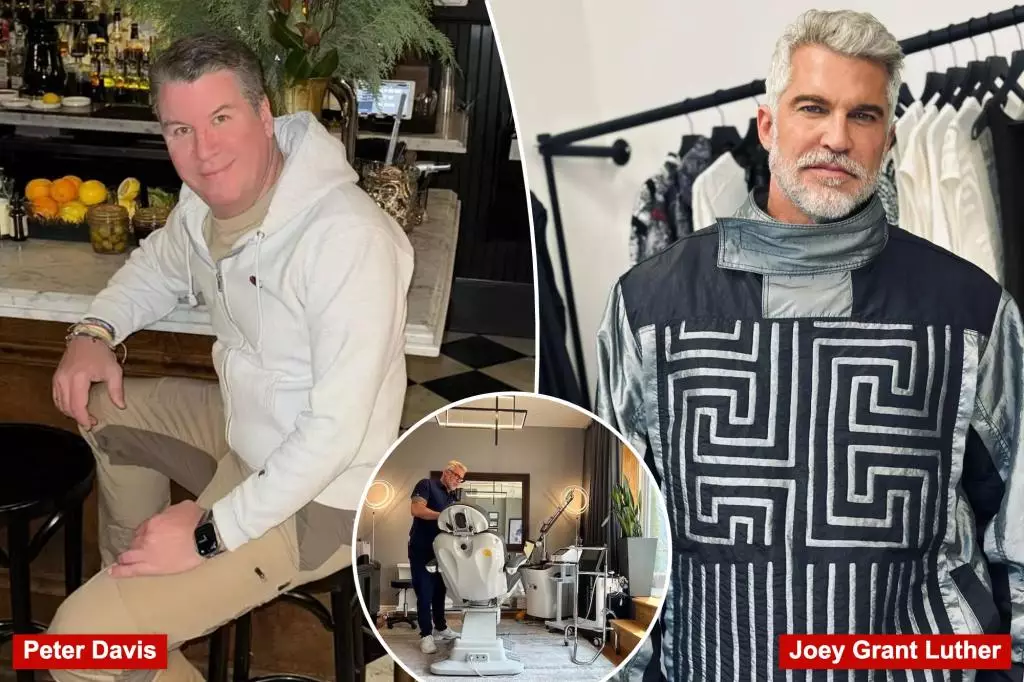In the world of aesthetic medicine, where the tension between beauty and safety is palpable, the recent downfall of Joey Grant Luther has sent shockwaves through social circles and the medical community alike. An erstwhile celebrated figure among local socialites, Luther’s alleged practices have stirred a mixture of disbelief, concern, and outrage—revealing not just the fragile facade of glamor but also the vulnerabilities lurking beneath.
The allure of affordable cosmetic procedures often leads people to questionable choices, and Luther’s case epitomizes this grave concern. The notion that people would willingly succumb to unlicensed practitioners for budget-friendly Botox treatments is alarming. As reported, Luther operated out of a makeshift med spa that was far from the sterile environment one should expect for such procedures. It’s vital for consumers to recognize the potential risks associated with “too good to be true” offers in the beauty industry.
Examining Luther’s approach, it raises questions about the motivations of individuals seeking cosmetic enhancements. Are they driven primarily by a desire for aesthetic perfection, or do deeper insecurities push them toward shortcuts that could jeopardize their health? This incident should also serve as a wake-up call for the general public about due diligence in choosing medical professionals.
As socialites attempt to navigate the fallout from Luther’s arrest, camaraderie and support have formed among his former clients in a novel group chat dubbed “Former Lutherans.” However, this camaraderie underscores a troubling reality: many individuals were misled about the nature and safety of the procedures they received. The shared experiences of suffering from adverse effects, such as double vision and other mysterious ailments, serve as silent testimonials to the risks incurred in the quest for a wrinkle-free appearance.
Moreover, the scandal has been said to rock the gay community, a significant segment of Luther’s clientele. This aspect of the narrative amplifies the discussion around masculinity, body image, and the lengths individuals go to achieve societal standards of attractiveness. The quest for physical enhancement has never been solely about aesthetics; it reflects broader cultural pressures that can escalate into dangerous territories when met with fraudulent practices.
The legal foundations underpinning this case are equally compelling. Luther faces serious charges, including wire fraud and the distribution of counterfeit drugs. The implications extend far beyond his personal practice; they spotlight systemic failures that allow such charlatans to operate unchecked. The medical community carries a responsibility to ensure practitioners are licensed and credible, and this incident underscores the dire consequences of neglecting these obligations.
What further complicates this narrative is the societal tendency to seek instant gratification and immediate results—often bypassing caution. Luther’s story should galvanize a movement toward higher accountability standards within aesthetic practices, as well as suitable regulatory reforms that safeguard clients from unscrupulous providers.
The saga surrounding Joey Grant Luther serves as a cautionary tale illustrating the intersection of beauty, legality, and ethics in the world of cosmetic procedures. As former clients swap stories and seek new, legitimate practitioners, a vital lesson emerges: prioritizing safety over superficial desires is paramount.
In an era where aesthetic enhancements have become commonplace, consumers must modernize their approach to beauty by scrutinizing providers and their credentials. This scandal is not simply about one man’s unscrupulous tactics; it is a call to action for patients to be proactive in safeguarding their health, as well as their vanity.
As the dust settles on this troubling chapter, may it ignite critical conversations within communities about the ethics of beauty, the unsung importance of safety, and the need for thorough vetting of aesthetic professionals. It is a time not only to reflect on experiences but to rethink our definitions and expectations of beauty in a safer, healthier context.
